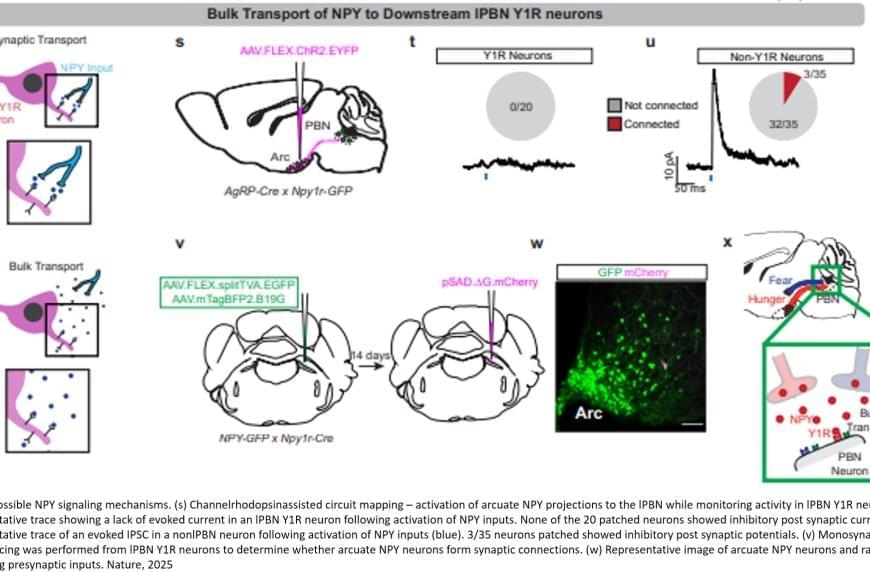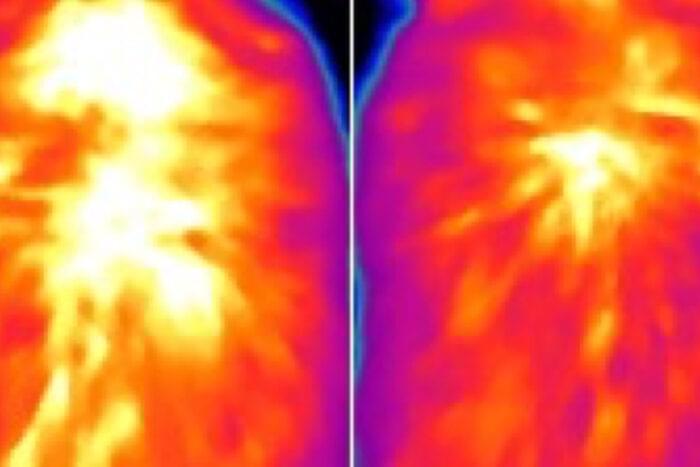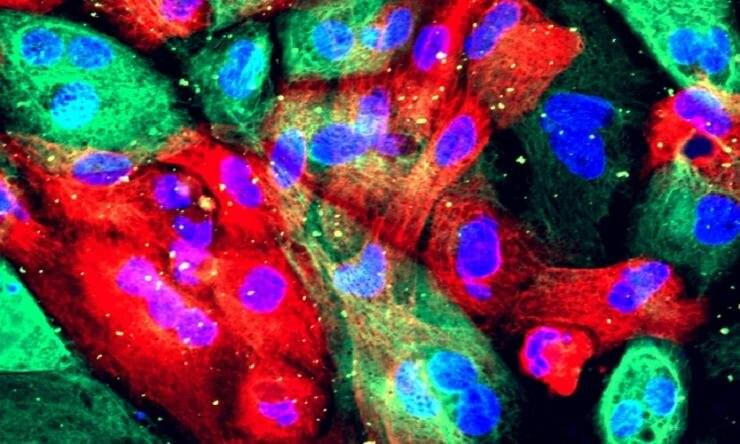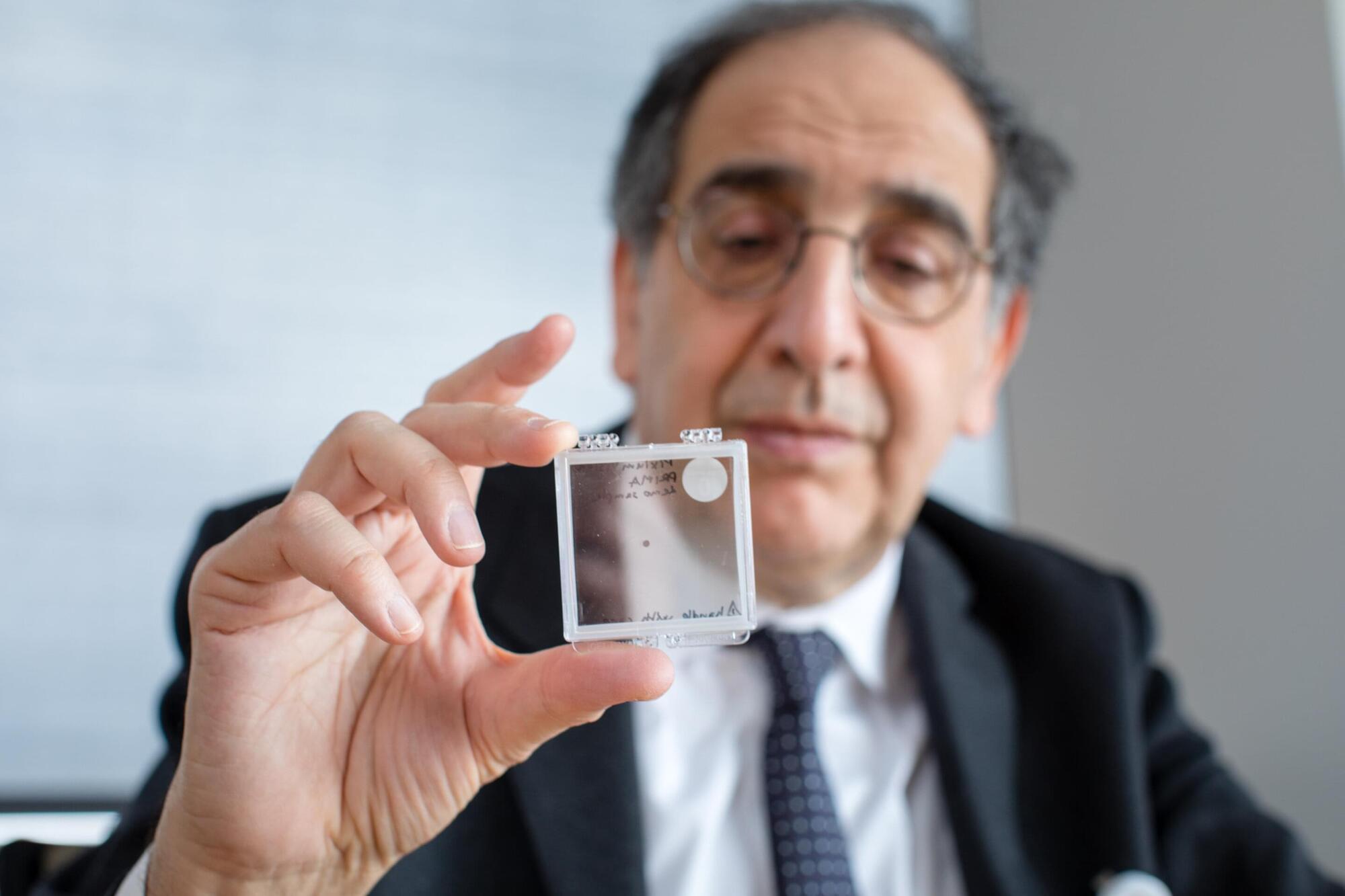New research shows that the brain’s ability to detect subtle visual changes—like spotting an anomaly on a security monitor—depends on theta-frequency brain waves (3–6 Hz) that rhythmically sweep across the cortex.



Encryption technologies are vital in today’s digital landscape to protect sensitive information from hackers and prevent fraud. While cutting-edge encryption has been developed for data, sophisticated protection for physical objects such as high-value products, access cards and documents has lagged behind until now.
Scientists have now developed a new hydrogel that acts as an unclonable physical tag. The work is published in the journal Advanced Materials.
Physical items are easily copied or faked because their built-in security tags are often weak or simple to clone. To solve this security gap, a team of researchers from China first mixed two chemicals together: polypyrrole, which conducts electricity; and polystyrene sulfonate, a flexible polymer. The result was a soft, conductive, jelly-like substance.

Acute or short-lived pain, despite its bad reputation, is usually a lifesaver. It acts as a transient negative sensory experience that helps us avoid danger. Touch a hot stove, stub a toe, or bonk your head on a low branch, and the nervous system cues up an “Ow!” Over time, the sting fades, the wound heals, but the lesson sticks.
Chronic pain is different; the alarm keeps blaring long after the fire is out, and then the pain itself becomes the problem. Nearly 50 million people in the United States live with chronic pain, an invisible and often untreatable condition that can linger for decades. “It’s not just an injury that won’t heal,” says a neuroscientist, “it’s a brain input that’s become sensitized and hyperactive, and determining how to quiet that input could lead to better treatments.”
Now, research has identified a key to regulating long-term pain states: a group of cells called Y1 receptor (Y1R)-expressing neurons in the brainstem’s lateral parabrachial nucleus (lPBN). These neurons are activated during enduring pain states, but they also integrate information about hunger, fear and thirst, allowing for pain signals to be modulated by other brain circuits signaling more urgent needs.
From patient to genetics research pioneer — christian maugee — phd candidate, university of florida.
Christian Maugee is a PhD Candidate at the University of Florida, in Genetics and Genomics (http://www.vulpelab.net/graduate-and-undergrad-students.html where his research explores how gene expression differs in the hearts of individuals with Friedrich’s Ataxia (FA), a rare, progressive neurodegenerative disease. His work could lead to new insights into the cardiac complications that can be associated with FA and how to potential treat them better.
Christian’s dissertation work is focused on identifying gene modulators of the transcriptional phenotype of FA in human induced pluripotent stem cells differentiated into cardiomyocytes (hPSC-CMs). He accomplishes this through use of a novel method: Perturb-seq — a CRISPR screen coupled with single cell RNA sequencing (scRNA-seq) readout.
Christian is driven by much more than academic curiosity, as he brings a unique and deeply human perspective to his work as someone living with FA. He doesn’t just study the challenges faced by those with disabilities; he lives them. His work is not only informed by data and theory, but by resilience, authenticity, and a commitment to making research more inclusive and impactful.
In the lab, Christian loves mentoring, and outside of the lab he loves fundraising and raising awareness for FA, mainly through FARA (https://www.curefa.org/) and MDA (https://www.mda.org/disease/friedreic…).



Scientists at Washington University School of Medicine in St. Louis have uncovered a new way that brown fat, a type of fat that burns energy, can boost the body’s metabolism. This process allows cells to consume more fuel and generate heat, improving overall metabolic health. Conducted in mice, the research points to new possibilities for using brown fat to address metabolic conditions such as insulin resistance and obesity.
The findings were published Sept. 17 in Nature.
Brown fat is unique because it turns energy (calories) from food into heat. Unlike white fat, which stores energy, or muscle, which uses it immediately, brown fat helps keep the body warm in cold environments. Exposure to cold can increase the amount of brown fat, and scientists have long suggested that activating it could support weight loss by increasing calorie burning.

Researchers have demonstrated a new and sustainable way to make the chemicals that are the basis of thousands of products—from plastics to cosmetics—we use every day.
Hundreds of thousands of chemicals are manufactured by the chemical industry, which transforms raw materials—usually fossil fuels—into useful end products. Due to its size and its use of fossil fuel feedstocks, the chemical industry is responsible for roughly 6% of global carbon emissions.
But researchers led by the University of Cambridge are developing new methods that could one day lead to the “de-fossilization” of this important sector.

An international study has uncovered a new vulnerability in prostate cancer cells that could help improve treatment for one of the most common cancers affecting men.
The research, published in the journal Proceedings of the National Academy of Sciences, was led by scientists from Flinders University in Australia and South China University of Technology.
It reveals that two enzymes—PDIA1 and PDIA5—play a crucial role in helping prostate cancer cells grow, survive, and resist treatment.

A wireless retinal implant can restore central vision in patients with advanced age-related macular degeneration (AMD), according to clinical trial results published in the New England Journal of Medicine.
Advanced atrophic AMD, also known as geographic atrophy (GA), is the leading cause of irreversible blindness in older adults, affecting more than 5 million people worldwide.
The international, multi-center trial was co-led by José-Alain Sahel, M.D., director of the UPMC Vision Institute, Daniel Palanker, Ph.D., professor of ophthalmology at Stanford University, and Frank Holz, M.D., professor of ophthalmology at the University of Bonn, Germany.